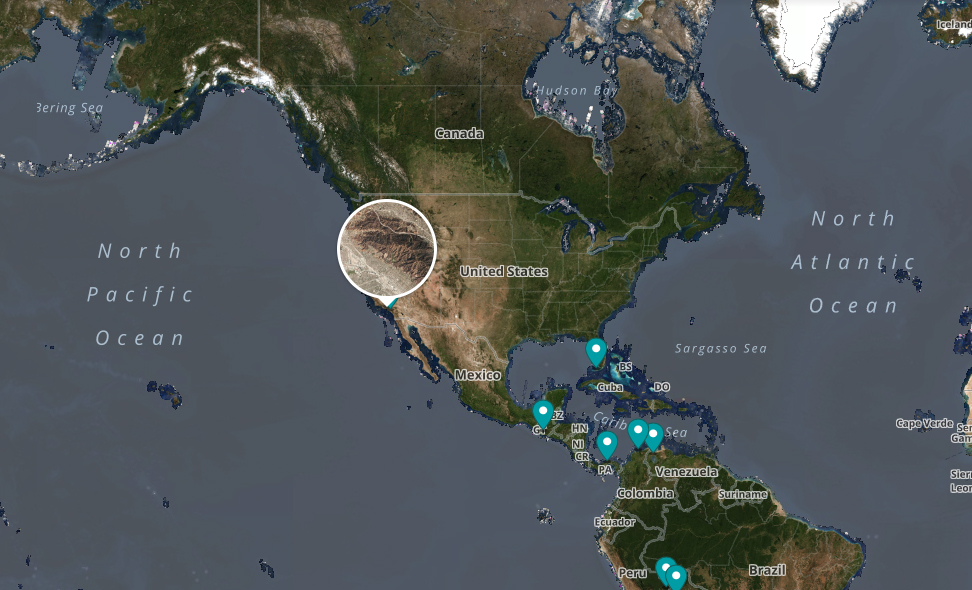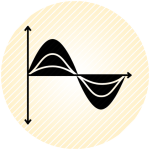Space-based satellites incorporate advanced photonics technologies capable of monitoring earth’s weather and climate, are used on sophisticated reconnaissance satellites, and navigation satellite systems. Photonics-based systems offer many advantages over more traditional electronic based ones. For example, they can carry a much higher bandwidth of information, have lower masses and power consumption, and are not susceptible to electromagnetic interference.
GEDI, the Global Ecosystem Dynamics Investigation will launch on a resupply mission for the International Space Station in late 2018. It “will be the first space-borne laser instrument to measure the structure of Earth’s tropical and temperate forests in high resolution and three dimensions,” according to NASA’s Goddard Space Flight Center.
Weather Satellites incorporate photonics capable of viewing in the visible, infrared, and ultraviolet wavelengths. They are positioned above the earth to take multiple images hourly and forecasters use these images as part of a larger ensemble of data to predict daily weather.

Miniaturized Satellites are now possible due to advances in photonics technology. The company Planet operates 150 low earth satellites capable of monitoring the entire globe daily. Imagery is used in agriculture to manage crops and improve yield, used by insurance companies to understand risk and discover fraud, and in emergency management to monitor events and improve response.
Related Courses found in the B.S. in Photonic Science and Engineering Program at UCF:

Laser Engineering and Lab
Includes the concept of a photon, processes of interaction of light with matter (and its application to detectors), the generation of light via spontaneous and stimulated emission, atomic transitions leading to fluorescence. Properties of lasers are introduced as the basis of optical amplifiers. Optical resonators are described as a means for optical feedback. Lasers as an optical oscillator are compared to radio and microwave oscillators. Basic characteristics and types of lasers: continuous wave and pulsed lasers. Covers commercial, industrial and medical applications of lasers. Nonlinear optics and its use for wavelength conversion.

This course includes the electromagnetic theory of light, Fresnel reflection and refraction, polarization and crystal optics, metallic and dielectric waveguides.

This course introduces the basic principles of two- and three-dimensional imaging systems. It includes the mathematics of image formation as a linear system and introduces point spread function, transfer function, resolution, and restoration. Objects such as microscopes, telescopes, and copiers operating in the gazing and scanning configurations are modeled and their resolution assessed. Interferometric imaging systems and their applications in metrology are described.

This course introduces the students to recent advances in optics & photonics. Students read selected articles in technical magazines and make seminar-like presentations to the class. Ethical issues associated with research and data management are discussed and addressed in students’ presentations. Students are introduced to techniques of effective communication, as appropriate to the discipline.

Optoelectronics and Lab
The course includes a description of the interaction of light with semiconductor materials in a p-n junction configuration, the phenomena of absorption, electroluminescence, and stimulated emission. The distinction between direct and indirect compound semiconductors materials is noted. Includes photodiodes, light emitting diodes (LEDs), semiconductor optical amplifiers, and laser diodes. Array detectors, including complementary metal-oxide-semiconductor (CMOS) and charge-coupled devices (CCD) arrays, and array LEDs are included. Basic specifications and applications of each of these devices are described, including solar cells, imaging with array detectors, and LED displays.

Geometric Optics and Lab
This course describes the physical principles that determine how rays behave at various interfaces. These principles are then used to model simple optical systems with varying degrees of fidelity. Natural optical phenomena (rainbows, mirages, total-internal reflection) and classic optical systems (prisms, telescopes, cameras) are analyzed. Linear systems are introduced to analyze more complex optical systems. This course provides the fundamentals needed for optical engineering and optical system design.